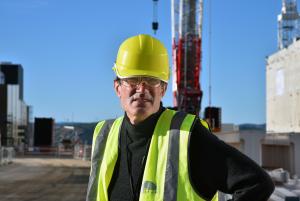An offshoot of the conventional tokamak design, the National Spherical Torus Experiment was built in the late 1990s by PPPL in collaboration with the Oak Ridge National Laboratory, Columbia University, and the University of Washington at Seattle.
The machine produced its first plasma in February 1999 and operated until 2012. It was
upgraded into NSTX-U between 2012 and 2015, gaining a more powerful toroidal field (1 T), plasma current (2 MA) and heating system. "This is not a little spherical torus anymore," said the head of engineering and operations at the time. "This machine has 10 times the capability of the original NSTX."
In 2016 however, as NSTX-U was ten weeks into operations, a dysfunction in one of its poloidal field coils brought everything to a halt.
Following the complete dismantling of the reactor and coils, a new team set to work and by last week a new baseline was finalized. "We now have an early finish date in April 2021," said Cowley to the CEA audience. "The spherical tokamak will be back around that time ..."
Cowley did not come to CEA (and to ITER following his conference) just to provide an update of Princeton's spherical tokamak, however.



